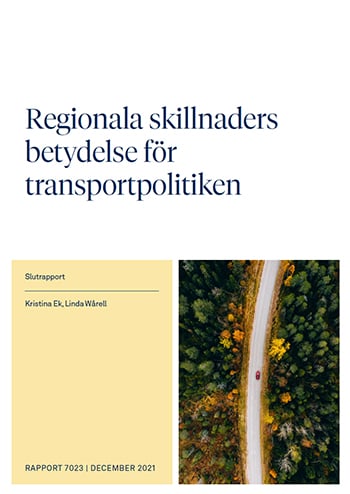The significance of regional differences for transport policies

About this report
The transport sector stands for a significant share of greenhouse gas emissions in Sweden. As fossil fuels still dominate this sector, changes in transports will be necessary in order to achieve the national and international climate goals. However, there are significant differences in conditions for transport, both within Swedish municipalities, between people living in the city center and people living in outlying or sparsely populated areas, and between municipalities. These different conditions affect the transformation towards a fossil-free transport sector. In the project, we have focused on such differences by studying the conditions for private transports in five Swedish municipalities, a large city (Stockholm), two medium-sized cities (Örebro and Luleå), and two small rural municipalities (Gislaved and Arvidsjaur).
In sum, the results show that there are significant differences in transformation costs for people living in rural municipalities, in sparsely populated areas or in central parts of cities. It is easier for households living in central parts of cities to switch to sustainable transport modes, as distances are generally shorter and the range of public transport is more developed. Electrification of transport is therefore particularly important for small municipalities with small populations and long distances, where the conditions for public transport are limited. Access to infrastructure for charging electric cars therefore needs to be available throughout the country, and it is problematic that the expansion of such infrastructure mainly takes place in metropolitan areas today. Here we see room for more clearly targeted government instruments for this infrastructure to be developed even in small municipalities with few alternatives to cars.
There are also policy measures that may be underused in all municipalities. One such is to develop the infrastructure to make it easier for citizens to choose active transport, not least since active transports are available also in small and relatively sparsely populated municipalities. Active transport is also beneficial from a health perspective, but since these health benefits, both for the individual and for society, arise relatively far in the future, the incentives are weak for municipalities to individually finance measures for increased use of active transports. Given that the health benefits of increased physical activity are distributed throughout society, there may be reasons for several actors (state, region and municipality) to jointly take measures to encourage active transport for both environmental and health reasons.
